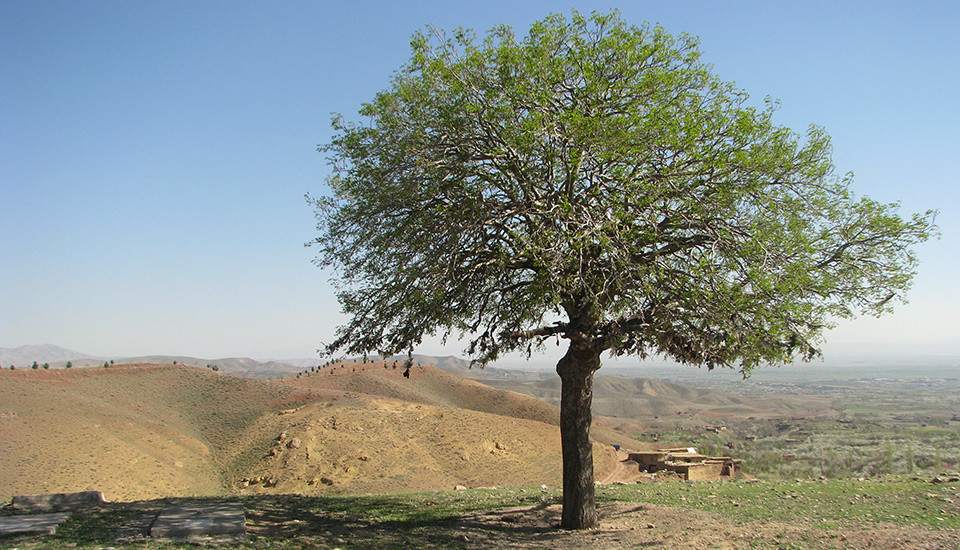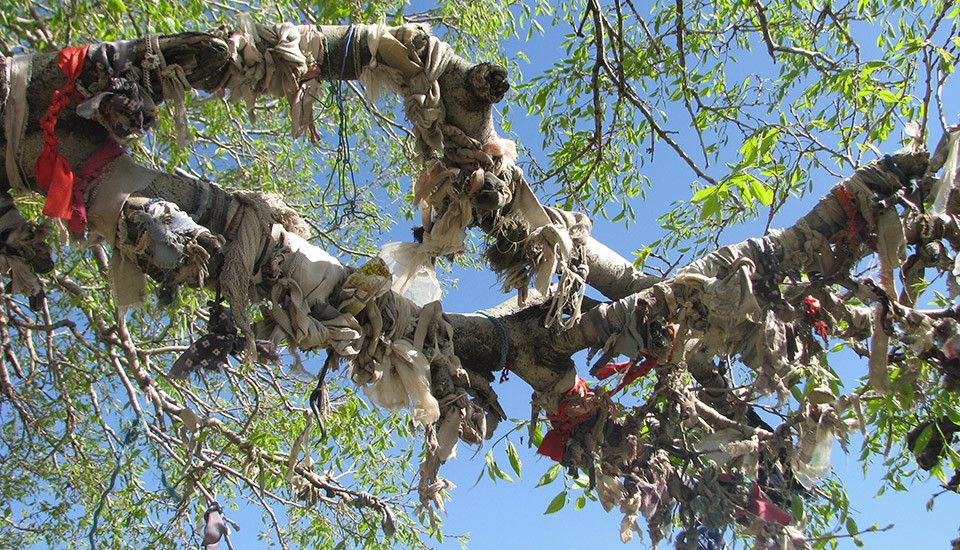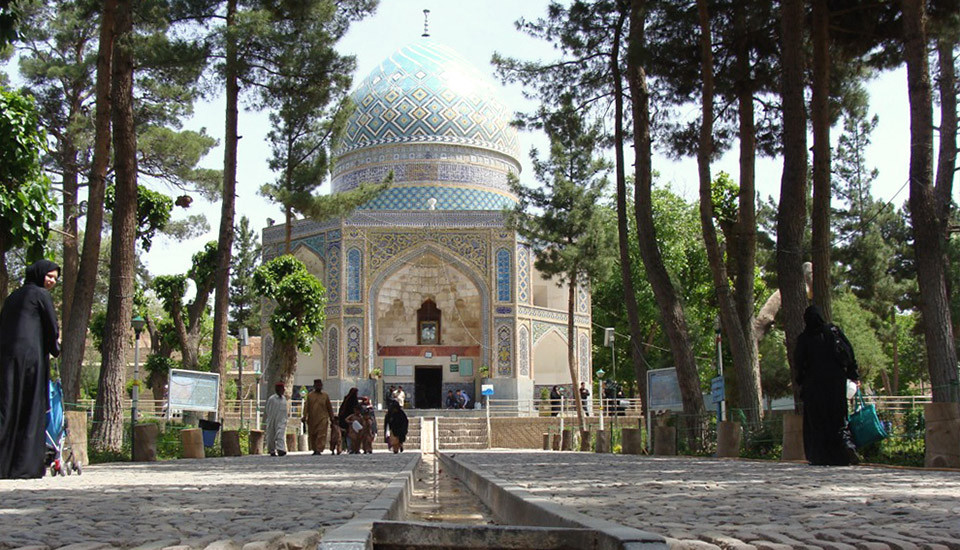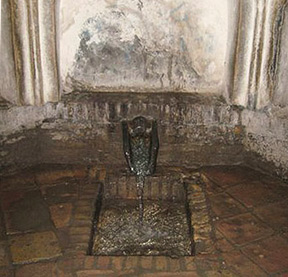Neyshabur je černošská štvrť v severovýchodnom Iráne. Veľká časť z nich sa nachádza v rozľahlej planine obklopenej kopcami a horami. Existujú rôzne posvätné prírodné pamiatky v černošskej štvrti, od posvätných stromov a posvätných prameňov k posvätnej balvana a posvätné záhrady. Oblasť tu niekoľko endemických rastlín a živočíchov. Obsahuje tiež chránených oblastí, a ecotourist destinácie, ako sú vodopády, pružiny, rieky a pútavý geografické rysy, ako horské vrcholy. Podnebie je polosuchých sušiť s priemerným ročným úhrnom zrážok 300 mm.
Napriek tomu, že tieto miesta sú chránené miestnych komunitách, Ich budúcnosť je ohrozená urbanizácia, rast počtu obyvateľov, rozvoj infraštruktúry a cestovného ruchu.
Chránený
Správcovia
Miestni ľudia rešpektujú prirodzené vlastnosti, ako sú zakorenené v ich náboženského presvedčenia. Qadamgah v Neyshabur napríklad, je perzská záhrada, kde je príroda bola predchnutá duchovných hodnôt. Obsahuje sídlo, stromy, bazény a potokov. Jeden stien zámku obsahuje čierny kameň, na ktorom sú dve stopy boli vyrezávané. Ľudia veria, že tieto kópie patrí do 8. imáma šiitov, samec duchovný vodca myšlienka byť potomkom Muhammed, božsky menovaný viesť ľudí. Slovo Qadamgah znamená stopu a odkazuje na túto rozprávanie.
História Qadamgahu ako posvätného miesta siaha až do predislamského obdobia. Aj keď jeho pôvodný účel nie je známy, je historicky spojená so sásánskym princom Shahpour Kasra, ako aj imámovi Alimu a imámovi Rezovi. Hovorí sa to 921 AD Imam Reza sa zastavil v záhrade na ceste z Mediny do Marv. V okamihu, keď chcel vykonať svoje umývanie, zo zeme vytryskol prameň. Prameň je odvtedy považovaný za posvätný a ľudia veria, že táto voda má liečivé vlastnosti.
Nejaké platany (Plantanus sp.) boli po stáročia aktívne konzervované. Platany v Iráne boli dlho považované za posvätné kvôli tieňu, ktorý ponúkajú, ich veľkosť a ich zelený vzhľad. V celom Iráne sa niektoré platany udržiavali nažive po stáročia. Legendy a povery o niektorých exemplároch spôsobili, že sa od nich ľudia držali ďalej. Dlhožijúci platan v dedine Neyshabur, napríklad, je konzervovaný miestnymi ľuďmi, pretože veria, že muž kedysi prišiel o rodinu kvôli lámaniu jej konárov.
Miestni ľudia stále zachovávajú menej známe posvätné miesta, ktoré nemajú právnu ochranu. Hodnoty týchto stránok sa učia mladšie generácie a náboženské obrady a postupy sú vykonávané communally, ako oni boli po stáročia. Týmto spôsobom, ďalšie generácie učia chrániť.
Hoci tam je formálne stratégie riadenia, ľudia majú tendenciu chrániť svoje stránky. Niektoré implementujú krátkodobé opatrenia na miestnej úrovni. Medzi širokú škálu plánov, ktoré sa realizujú napr, okolo stromu prianí je založený park a rozvíjajú sa tu turistické služby.
Akcia
Miestni ľudia a náboženské inštitúcie pokračujú vo svojich prastarých praktikách. Miestne kancelárie o Kultúrne dedičstvo, Ručné práce a cestovný ruch registrovať dlhoveké stromy ako národné prírodné pamiatky. Národné prírodné pamiatky sú pomerne malé, zaujímavé, jedinečný, výnimočný, nekonvenčné a nenahraditeľné fenomény rastlinných a živočíšnych zbierok majúcich vedeckú, historický alebo prírodný význam. Ochranné opatrenia v týchto oblastiach zaručujú ich trvalo udržateľné nekomerčné využitie.
Existuje aj národný plán inventarizácie a ochrany dlhovekých stromov pod dohľadom lesy, Organizácia riadenia povodí a povodí z Iránu. Nedávny výskum Maryam Kabiri upozorňuje na význam duchovných hodnôt, ktoré tieto a ďalšie posvätné miesta majú vo vzťahu k ochrane prírody..
Politika a právo
Právne predpisy Irán má žiadnu zmienku o posvätných prírodných lokalít tak ďaleko. Niektoré posvätné prírodné pamiatky boli oficiálne zachované, pretože sa nachádzajú v chránených oblastiach alebo v národnom pamätníku. Iní boli špeciálne registrované ako národné prírodné pamiatky. Kultúrne dedičstvo a odbor životného prostredia úradu majú slovo pri ochrane národná prírodná pamiatka. Oni obhajujú predovšetkým pre vzácnu flórou a faunou alebo pozoruhodných pozemných útvarov, krajiny alebo dokonca starých stromov. Sú potom priniesol pod ochranou určením vhodného obvod.
Koalícia
Niektoré posvätné miesta v tejto oblasti sú pod dohľadom Nadácie a charitatívne organizácie (zodpovedný za nadácie a posvätné miesta, ako sú mešity a svätyne) a správna rada miestnych ľudí. The Kultúrne dedičstvo, Organizácia remesiel a cestovného ruchu zodpovedá za evidenciu a správu historických pamiatok a národných prírodných pamiatok.
Vykročte, napríklad, bola zaregistrovaná týmto spôsobom, ale je tiež pod dohľadom nadácií a charitatívnych organizácií Iránu a miestnej správnej rady. Ako v prípade Qadamgah, ak má lokalita kultúrne aj duchovné hodnoty, tieto organizácie spolupracujú pri ochrane a správe lokality.
Ochranná nástroje
Boli stanovené kritériá ochrany a tieto kritériá viedli k vytvoreniu máp oblastí v meste Neyshabur, ktoré potrebujú prioritnú ochranu.. Niektoré odporúčania boli dodatočne formulované v tejto práci, ktoré môžu pomôcť s počiatočnými krokmi pri plánovaní politickej agendy a vypracovaní kritérií a indexov národnej prírodnej pamiatky tak, aby zohľadňovali duchovné hodnoty.
Výsledky
Posvätné prírodné lokality ako súčasť biokultúrnej rozmanitosti boli po stáročia chránené miestnymi presvedčeniami a hodnotami. V súčasnosti sú tieto stránky ohrozené z rôznych dôvodov. Ak majú prežiť, existujúce opatrenia musia byť podporená právnej ochrany. Za týmto účelom, integrovaný prístup založený na spoločných kritériách a politík v oblasti prírody a kultúry môžu hrať kľúčovú úlohu pri ochrane posvätných prírodných lokalít. Kabir Henda (2011) identifikovaná tieto kritériá pre zachovanie posvätných prírodných miest v černošskej štvrti Neyshabur.
- Bahar, M. (1995) Od mýtu k histórii. Publikácia Cheshmeh, Teherán, Irán.
- Daneshdoost, J. (1992) Perzská záhrada. Asar Journal, Vol.12: 48-52.
- Kabir Henda, M. (2011) Hodnotenie územia na ochranu prírodných lokalít s duchovnými hodnotami, prípadová štúdia Neyshabur Township. Diplomová práca MSC na Teheránskej univerzite, drahí, Irán.
- Taheri, A. (2009) Turistický sprievodca Neyshabur. Abarshahr, Mašhad, Irán.
- Cítiť, B (2005) Komplex finančných lesov, Časopisy, vydanie7:86-93.







